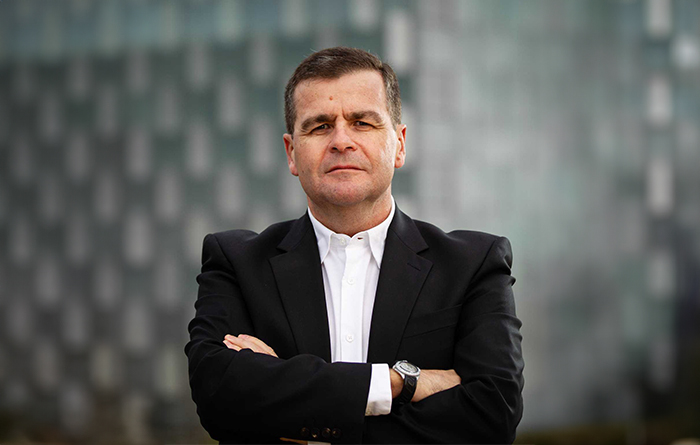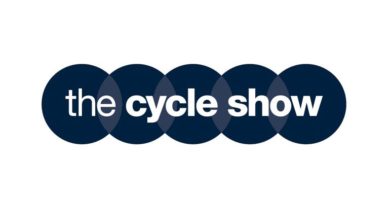Unavoidable change: Cristóbal Pérez on the future
In part 1 of a 7 part feature series, Cristóbal Pérez – a seasoned cycling industry professional with a track record of leading change – explores what the future could bring to our industry; the good, the bad, and the ugly. In each of these there is opportunity – if you can embrace the change required to unlock it.
Across the series Cristóbal will pose challenging questions, as a means to explore potential for future growth.
Unavoidable change.
That is what times bring: changes. It seemed that it would never happen to the bike panorama, but it did. Gone are the days of steel-only bikes for road. Clipless pedals, MTB, carbon fibre, suspensions, eBikes are good proof of having done what it took, but now it is a different time and a different change.
The product is enormously advanced. Bike technology is paired with the best F1 or aircraft industry developments. But the rest of the structures, systems, strategies and, generally speaking, modus operandi need an overhauling.
Now, the change is way deeper. The new technologies and social demands are now variables to be taken into account. A bike sends a positive, healthy, socially accepted message, and an evolutive approach on two wheels.
The bike industry and all that it means has to be redefined, and adapted. So far, the sector has been in the hands of a founding generation that created the first big brands, the first large retailing structures, the first racing spectacles, and also your favourite bike shop around the corner.
In many cases, this led to a comfortable status that kept the leading profiles from evolving, and thus, the depending-on-them industry was stuck. Those bold entrepreneurs used to come from cycling love or cycling races. With no little effort, those businesses were raised thanks to the devoted commitment of someone who loves bikes or as a post-racing career continuity.
Other activities went through this very same process and nowadays they are in an according-to-times position. Your car, motorcycle, or home appliances left behind the limitations of a function-based post-war role to become a popular and/or indispensable commodity that fits perfectly in a high-demand consumer mindset.
Now it is our time.
The bike is in the eye of the hurricane. It is really attractive for consolidated users, new users, companies, brilliant minds, and restless money.
The big leverage of this shift is the eBike. Technification and/or electrification set the new start line. Bosch launched their eBike systems in 2011. Shimano in 2014. Brose, and Bafang heat the scene with their industrial background and resources not way beyond ten years ago. Fazua (Porsche now) did the right thing ten years ago. Mahle, just landed. And many more are coming: Polini, E2, Pinon, SRAM…
To put things in perspective, Shimano is a big company for us, but a small-to-mid-sized company based on turnover. Brose doubles Shimano. Mahle equals Shimano plus Brose. Bosch’s turnover is more than twenty times Shimano’s.
So, put together a growing, promising, and brilliant lifespan ahead sector led by some traditional and not-too-big companies, whose developments are based mostly on mechanical devices. Add a traditional and worn-out distribution scene and you got it. This is the perfect landscape for others to decide to join the party.
The change is served. For our sake.
The companies landing in our field are very evolved, innovative, and wealthy. They learned by walking this revolutionary path before us. The only thing they have to do is trickle down to what works best for them. Automotive, financial, and technological industries, are among the ones that decided to put their eggs in our basket.
I think that the new approach of those companies will bring only benefits:
- Technologically: eBikes need and will need more and more advanced technology than traditional ones. It does not concern only engines and transmissions, but connectivity. Our cars are truffled with sensors, chips, and electronics that make them able to cope with the demands, not only of regulations and safety but users as well. Tracking, handling automatization, performance, optimization, status checking, guidance, servicing, and all that the new driver’s demand. Finally, bikes will have this all to cope with future endeavours. Do not forget that many of those becoming acquainted with cycling will be car owners. They will require what they already have, need and understand.
- Distribution: Existing networks such as car or motorcycles, are specialist, well-trained, and with a strong brand and belonging awareness. The focus on fewer brands, if not one, will put the end consumer closer to the power of the maker. D2C or through deeper involvement between the one who creates the brand universe and the addressee of it, and vice-versa. Pricing, commercial practices, policies, look and feel will be more aligned. Be it online or offline.
- Marketing: The identity of the brand is more evident. The marketing budget is considered an investment, not an expense. The data allows us to reach our targeted users in a best-suited manner. Proposals, campaigns, their tracking, and output are perfectly analysable, and a better basement for further decisions. The language and tone of voice are the same throughout the wide spectrum of communications, say social media, advertising, literature, etc.
- Service: The icing on the cake. The most powerful loyalty and recommendation tool has to scale up to a whole new level because other industries made it possible and it became a source of turnover, prestige, trust, and business stability. Tooling and means are not discussed because those are the musts to provide the longed-for and advanced service, for which training is also essential.
- Management: a more professional approach and more versatile profile availability implies better management able to relieve the current and praiseworthy generation that took cycling to our days. It also opens the door to those professionals wishing to update themselves and grow with their companies. Modern managers procure a comprehensive handling of the company and coordinate the different departments aiming for a better and more fluid operation.
Some could conclude that those new actors will wipe out the existing bike industry. Nothing farthest from the reality. Their model is based on new big own stores and/or acquisition of existing bike shops and is always backed by solvent budgets. In the first case, big surfaces are needed to justify and make the investment profitable. In the case of acquisitions, this alternative gives a second opportunity to former leading IBDs whose days are coming to an end.
I think that bikes will be mostly sold in bike shops, whatever their format and owner are. To generate affinity and trust, selling bikes in car dealers or electronics shops is possible, but restricted to a certain bike category and user profile.
These new players are one more competitor fighting for their space with a focus on their direct competitors of the same size and power.
Merging and acquiring is a usual formula to survive. The arrival of big actors and money is usually accompanied by new resulting structures. Electronics, supermarkets, automotive, or fashion have their own Mediamarkt, Carrefour, Quadis, or Zara that implemented the new business models without cannibalizing the whole market. Small and medium businesses have not disappeared and have a lot to say by reacting with formats offering other values and convenience.
This new bike company profile will be able to put bikes in the face of a new type of user, more users that might not have contemplated a bike in their lives because the engagement and power of small businesses could have not reached them, neither by numbers or nature.
Small shops can cover geographic areas thanks to the atomization of the distribution channel and offer closer service, values, and products where the big ones cannot be physical. But it also means that they have to move their businesses forward, a topic on its own.
New and big players are here to make the bike guild grow and evolve. Without this thrust, our industry would struggle or become a minimal part of what it will be thanks to a brilliant future ahead of us and those who are in.
This is not an option. The law of evolution in an always-changing market sets the pace.
There is a place for everyone, but a different place.
To follow or connect with Cristóbal on LinkedIn, click here.
Part 2 of this series – Distribution Structure Challenging – goes live in 2 weeks: 12:30 UK / 13:30 CET, Monday 30th of October.



